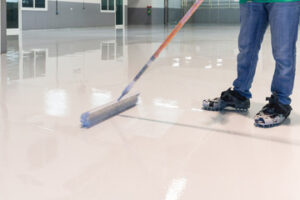Small cracks and dents can detract from your home’s curb appeal. It’s important to address these issues as soon as possible to prevent them from spreading.
Localized damage can often be fixed with a vinyl patch kit and caulk. For gaps that extend beyond the edge of a siding panel, you may need a zipper tool and pry bar. Contact Siding Repair Charleston SC now!

When a hole in the siding creates a gap, it exposes the home to moisture, which can damage the structure and cause further problems. It’s important to identify and repair these areas promptly to prevent water penetration, mildew buildup, and pest infestation. Incorporating a routine inspection of the vinyl siding in your seasonal home maintenance can help you keep tabs on deterioration.
Inspect the siding for signs of moisture damage, including cracked wood and rotting material. These signs may also indicate the presence of invasive insects and rodents. In addition, moisture penetration causes wood to shrink and expand, creating unsightly gaps and loosening the structure of the home.
To address these issues, a wood filler can be used to smooth the rough edges of the damaged panel and restore its shape. Once the filler dries, the area can be sanded down and painted. Insect repellent and a sealant can be applied to the surface to keep pests away from the repaired area.
A patching kit contains materials and tools you’ll need to repair siding damage, such as a utility knife or tin snips, a pry bar or zip tool, a hammer, and eye protection. You’ll need to remove the affected piece of siding to gain access to the nails and screws holding it in place. You can do this by finding an inconspicuous location and cutting vertically through the piece of siding no wider than two feet, or by using a zip tool to disengage the piece from the siding above it.
Once the piece of siding is free, use a hammer and screwdriver to remove any nails or screws holding it in place. You can then replace the damaged section with a new piece of siding that matches the surrounding panels. Use a tape measure to take accurate measurements, and cut the replacement siding to the correct size. Nails should be stainless steel siding nails.
Lastly, use paint to match the color of the replacement and existing siding, and to cover any nail holes and cracks in the repaired area. A brush and a roller are both helpful when applying the paint, and a putty knife can be used to smooth any uneven surfaces.
Rotting
In addition to cracks and holes, another common siding repair problem is rotted wood. This is often caused by a fungal infection that attacks the cellulose, or fibers, of the wood. If left untreated, the fungus can spread to other parts of the home and cause structural damage. This can dramatically reduce your home’s value and make it unsafe to live in.
Signs of rotting include soft or spongy wood, discoloration, and an unpleasant odor. Fortunately, if the rot is caught early, it is often possible to replace the affected section of the wood with fresh material and a wood preservative.
To do this, you’ll need to gather all of the necessary tools and materials. These include a utility knife, zip tool, pry bar, hammer, nails, measuring tape, and vinyl patch kits and replacement siding panels. You’ll also need to buy caulk and exterior paint in a color that matches your siding.
Start by removing any loose or rotting wood from the damaged area with a utility knife or putty knife. Continue to remove the compromised wood fibers until you reach healthy, solid wood. Once the area is free of rot, apply a wood preservative to the underlying wood and then install a new clapboard panel to match your existing one.
This process can be difficult and time-consuming, but it’s important to address rotted areas of the house as soon as you can. Delaying repairs can lead to further issues that snowball into bigger problems and cost you more money in the long run. In addition, visible rot can discourage potential buyers or renters from expressing interest in your home and may significantly impact its resale value. By following these simple tips, you can avoid major siding repairs and keep your home looking great for years to come.
Energy Efficiency
The siding on your house serves as a layer of protection against the elements, from wind to rain, from blazing sun to freezing cold. It’s designed to last, but over time it will likely need repairing or replacing. Siding is expensive, but repairing and replacing it as soon as you notice damage can save you a lot of money and prevent more serious problems down the road.
Dents and dings are common in vinyl siding, especially after hailstorms, and can be repaired with relatively little cost. More extensive dents may require replacement, as well as warping and buckled panels.
When siding is damaged, moisture can seep into the insulating layer beneath, causing it to not work as well. This will cause your home to use more energy to stay cool or warm, which can add up quickly over time. Getting your siding repaired or replaced as soon as you notice any damage will help lower your energy bills and make your home more comfortable.
Keeping up with regular maintenance and repair will protect your home’s value and keep it looking beautiful for years to come. A professional siding inspection can help you decide if patching or replacement is best, and provide insight into how your cladding will perform in the future.
In addition to saving you money, repairing and replacing your siding contributes to environmental sustainability by reducing the amount of waste from your household going into landfills. In many cases, a repair will be sufficient to resolve siding issues, but wide-spread damage or an aging property will require replacement to prevent more expensive problems down the road. By carefully weighing short-term costs with long-term goals, siding professionals can help Wisconsin homeowners make the right choice for their homes. Contact a local pro for an in-home consultation today!


